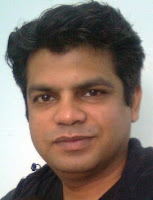Stakeholder causal scope to bridge the industry – academia collaboration gap
Analyzing the cause and consequence of stakeholder relationships and interactions is key to unlocking the potentials of bridging the industry – academia research collaboration gap, says Dr. Riad Shams, Senior Research Fellow, Ural Federal University, Russia.
How could we envision a prospective scope that could proactively justify the need of industry –
academia collaboration? Why should the industry pay to buy academic research or be interested in industry – academia research and development collaboration, whereas many public and private corporations run their own research and development unit? How would the industry – academia collaboration be instrumental to effectively contribute to socioeconomic and/or ecological development? These questions are now central in the debate of industry – academia collaboration. Thus, exploring insights on these questions would be instrumental to unlock the further potential of reciprocal development towards a better world.
Collaborative endeavours from any perspective usually set a platform for the associated stakeholders to work together, in order to pursue their mutually-beneficial multifarious goals. Therefore, analyzing the cause and consequence of stakeholder relationships and interactions, as a stakeholder causal scope (SCS)[1,2] to understand the allied stakeholders’ goal for collaboration and to analyse the mutually available resources, would be valuable to plan and implement the strategy to jointly pursue that stakeholder relationship goal for instance in between an academic institution and a public or private sector industry body. For example, to obtain research funds or to initiate a research and development collaborative initiative, the applicants need to profoundly demonstrate how they will be able to cost effectively satisfy the funding body’s socio-economic or ecological need(s) and multifarious goals from the contexts of particular socio-economic conditions. Based on a case example on the Australian Curtin University’s transnational operation in Malaysia, some insights could be recognised on how Curtin Malaysia has been analyzing their transnational stakeholders’ SCSs to justify how Curtin’s research would be able to meet their transnational funding body’s ecological need, in a way that would be expected and accepted by their transnational stakeholders.
In such efforts of Curtin’s justification on their research capabilities to contribute to the local
Malaysian ecological issues, Curtin describes that the Borneo sun bear, an endangered creature, enables them to work carefully with local people to look after the Malaysian wildlife as part of their ecological research on local creatures such as bear, crocodile and other local endangered animals in order to contribute to the Malaysian Government’s ecological need [3]. Here, the cause of the Malaysian Government is to protect their wildlife and the cause of Curtin Malaysia is to sell their ecological research capabilities. The consequence of these two causes enabled Curtin to receive approximately US$231,192,570 as research grant by the Malaysian Government during their first fifteen year operation in Malaysia.
The Curtin example demonstrates that analyzing the SCS centered on the needs of Curtin Malaysia and the Malaysian Government as the two research and development stakeholders enable Curtin to:
As a consequence, analyzing the current and latent SCS between the associated stakeholders from the industry and academia, and focusing on the given situation of a particular shared goal and specific socio-economic and/or ecological background appears as an effective concept to bridge the industry – academia collaboration gap from the context of that particular state of affairs.
[1] Shams, S. M. R. Capacity building for sustained competitive advantage: A conceptual Framework. Marketing Intelligence & Planning, Vol. 34, No. 5, pp. 671-691.
[2] Shams, S. M. R. Branding destination image: A stakeholder causal scope analysis for internationalisation of destinations. Tourism Planning and Development, Vol. 13, No, 2, pp. 140 -153.
[3] Shams, S. M. R. Sustainability issues in transnational education service: A conceptual framework and empirical insights, Journal of Global Marketing, Vol. 29, No. 3, pp. 139-155.
How could we envision a prospective scope that could proactively justify the need of industry –
academia collaboration? Why should the industry pay to buy academic research or be interested in industry – academia research and development collaboration, whereas many public and private corporations run their own research and development unit? How would the industry – academia collaboration be instrumental to effectively contribute to socioeconomic and/or ecological development? These questions are now central in the debate of industry – academia collaboration. Thus, exploring insights on these questions would be instrumental to unlock the further potential of reciprocal development towards a better world.
Collaborative endeavours from any perspective usually set a platform for the associated stakeholders to work together, in order to pursue their mutually-beneficial multifarious goals. Therefore, analyzing the cause and consequence of stakeholder relationships and interactions, as a stakeholder causal scope (SCS)[1,2] to understand the allied stakeholders’ goal for collaboration and to analyse the mutually available resources, would be valuable to plan and implement the strategy to jointly pursue that stakeholder relationship goal for instance in between an academic institution and a public or private sector industry body. For example, to obtain research funds or to initiate a research and development collaborative initiative, the applicants need to profoundly demonstrate how they will be able to cost effectively satisfy the funding body’s socio-economic or ecological need(s) and multifarious goals from the contexts of particular socio-economic conditions. Based on a case example on the Australian Curtin University’s transnational operation in Malaysia, some insights could be recognised on how Curtin Malaysia has been analyzing their transnational stakeholders’ SCSs to justify how Curtin’s research would be able to meet their transnational funding body’s ecological need, in a way that would be expected and accepted by their transnational stakeholders.
In such efforts of Curtin’s justification on their research capabilities to contribute to the local
Malaysian ecological issues, Curtin describes that the Borneo sun bear, an endangered creature, enables them to work carefully with local people to look after the Malaysian wildlife as part of their ecological research on local creatures such as bear, crocodile and other local endangered animals in order to contribute to the Malaysian Government’s ecological need [3]. Here, the cause of the Malaysian Government is to protect their wildlife and the cause of Curtin Malaysia is to sell their ecological research capabilities. The consequence of these two causes enabled Curtin to receive approximately US$231,192,570 as research grant by the Malaysian Government during their first fifteen year operation in Malaysia.
The Curtin example demonstrates that analyzing the SCS centered on the needs of Curtin Malaysia and the Malaysian Government as the two research and development stakeholders enable Curtin to:
- Envision the scope of university – government research collaboration, based on the Malaysian wildlife perspective
- Justify their superior ecological research competence, in comparison to the competence of different research units of the Malaysian Government and the local universities to contribute to the local wildlife
- Implement ecological development plan, based on the university – government research and development collaboration.
As a consequence, analyzing the current and latent SCS between the associated stakeholders from the industry and academia, and focusing on the given situation of a particular shared goal and specific socio-economic and/or ecological background appears as an effective concept to bridge the industry – academia collaboration gap from the context of that particular state of affairs.
[1] Shams, S. M. R. Capacity building for sustained competitive advantage: A conceptual Framework. Marketing Intelligence & Planning, Vol. 34, No. 5, pp. 671-691.
[2] Shams, S. M. R. Branding destination image: A stakeholder causal scope analysis for internationalisation of destinations. Tourism Planning and Development, Vol. 13, No, 2, pp. 140 -153.
[3] Shams, S. M. R. Sustainability issues in transnational education service: A conceptual framework and empirical insights, Journal of Global Marketing, Vol. 29, No. 3, pp. 139-155.
Catch up on the latest from our Real World Impact campaign on our website!





Hello, i am from USA, I want to share this great testimony about how Dr.Agbazara helped me bring back my ex lover, During my search for solution i came in contact with Dr.Agbazara details and through his help my lover came back to me within 48 hours. So with these i am so bold to advise anyone seeking for a way to get there lover back to contact Dr.Agbazara on WhatsApp: { +2348104102662 } or via email at: { agbazara@gmail.com } I am so happy at least myself and my lover are back to each other again and going to spend the New Year celebration together Thank to Dr.Agbazara once again....
ReplyDelete